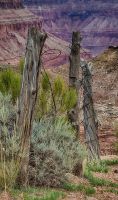USFS International Programs Seminar: Green Value – An innovative tool for...community forest enterprises: June 12 (12-1 EST)
 [2]
[2]
US Forest Service International Programs Seminar Series presents
WHAT: Green Value – An innovative tool for evaluating and strengthening the financial viability of community forest enterprises
WHO: Shoana Humphries, PhD, Scientist, Earth Innovation Institute, and Thomas Holmes, PhD, U.S. Forest Service
WHEN: (Friday) June 12, 2015 12- 1pm
WHERE: U.S. Forest Service International Programs (near McPherson Square Metro). 1 Thomas Circle, NW, Suite 400 Washington DC-20005
Please R.S.V.P. Pari Henkai 202-644-4587 or phenkai@fs.fed.us [3]
CONNECT REMOTELY: If you cannot attend the seminar but would like to hear it using ADOBE CONNECT, please see the instructions at the end of this message.
ABOUT THE PRESENTATION
One of the biggest weaknesses of community-based forest enterprises in the tropics is financial management, and the Green Value tool aims to address this challenge. Green Value originated from work in 2007 and 2008 by Dr. Thomas Holmes (US Forest Service) and Dr. Shoana Humphries (Earth Innovation Institute) in response to the need for simplified procedures to conduct financial analysis for community-based forest enterprises producing timber in Brazil. From 2013 to 2015, with support from USAID and the US Forest Service’s Office of International Programs, the original worksheets have been expanded into a tool with a User’s Guide and six easy to follow steps. To date this tool has been used to train over 180 people in six countries and to analyze family and community production of a wide range of forest products and services. The tool is innovative in that it includes all costs, including those that are subsidized (e.g., technical assistance and machinery), it breaks down costs by productive activities and inputs (labor, materials/services, and machinery/equipment), and it provides the average cost per unit sold (in addition to other financial indicators). These results allow for better planning and decision-making by community-based forest enterprises and their collaborators, and provide transparent financial information that can improve community-based forest enterprises negotiations with buyers and attract investors. Furthermore, the results help inform policy-makers and others working to support community-based forest enterprises on the financial challenges community-based forest enterprises face as well as the financial benefits they provide local communities through wages and purchases of materials and services. Examples of family and community enterprise products analyzed to date include logs, finished wood products, Brazil nuts, carbon credits, tourism, bamboo, and traditional crafts. The tool is now available on EII’s website in English, Spanish, and Portuguese (www.earthinnovation.org/green-value-continued [4]). An overview of Green Value and details on its use to date will be provided, as will a discussion of next steps.
ABOUT THE SPEAKERS
Shoana Humphries has a Ph.D. in Forest Resources and Conservation with a minor in Food and Resource Economics from the University of Florida. She has worked in community forestry and forest certification for the last 18 years in the US, Brazil, Bolivia, Peru, Mexico, and Germany. Shoana’s international community forestry experience began with a short term consultancy in 2000 with the Bolivian Sustainable Forest Management Project, which then led to two years in Peru with ProNaturaleza. After completing her PhD, which focused on community forestry in the Brazilian Amazon and southern Mexico, she worked for three years as the Social Policy Manager for the Forest Stewardships Council International Center, in Germany, to make certification more accessible and beneficial for smallholders around the globe. Today Shoana is part of Earth Innovation Institute’s smallholder program, which seeks to strengthen the role and recognition of smallholders as key actors in low emission rural development in the tropics. Her work focuses on training and applied research with family and community forest enterprises in the Amazon region.
Tom Holmes is a Research Forest Economist with the Southern Research Station, U.S. Forest Service. He received his Ph.D. in Agricultural & Natural Resource Economics from the University of Connecticut in 1986. Prior to his current position, he spent two years as a Research Economist with the Economic Research Service investigating water quality issues. His current research is focused on understanding the ways in which forest ecosystems contribute to societal well-being. This is accomplished using market and non-market valuation methods to research topics in forest health, wilderness economics, behavioral economics, invasive species management, climate change, wildfire risk, water management and tropical forest conservation.
ADOBE CONNECT instructions
To access the Adobe Connect web meeting, please ensure that your computer has a good Internet connection. A hard-wired connection is better than wireless. Also make sure your computer has Adobe Flash Player (11.2 or higher). No additional software is required. To make sure your connections are configured correctly before the seminar, test them by visiting: Adobe Connect Test. Also, users find that wearing a headset for the audio is better than listening through a computer’s built in speakers. If you have technical questions, contact Adobe Connect at 800-422-3623.
Once you know you can connect, follow these steps:
1. Connect your computer/mobile device to the Adobe Connect web meeting: https://usfs.adobeconnect.com/ip/ [5]
2. Select “Enter as a Guest” (you do NOT need a login and password)
3. Type your name or location (if multiple people are joining together) into the “name” box
4. Click “Enter Room”
5. Feel free to send in any questions for the speaker in the chat or Q & A box. For technical issues, please contact Adobe Connect at 800-422-3623
***************************************************************************
For more information on US Forest Service International Programs, please visit http://www.fs.fed.us/about-agency/international-programs [6]
******************************************************************************
If you would like to be removed from our mailing list, please reply to this email with an “Unsubscribe” in the subject line